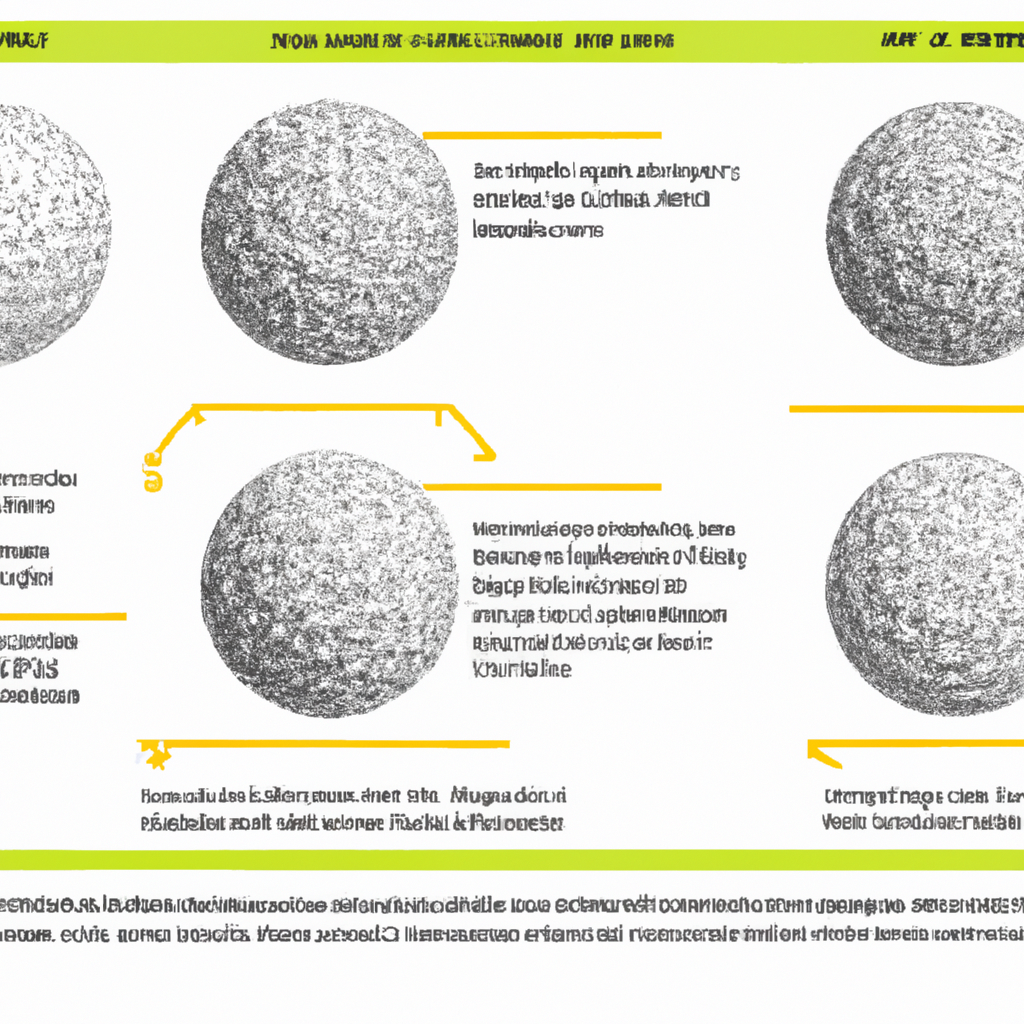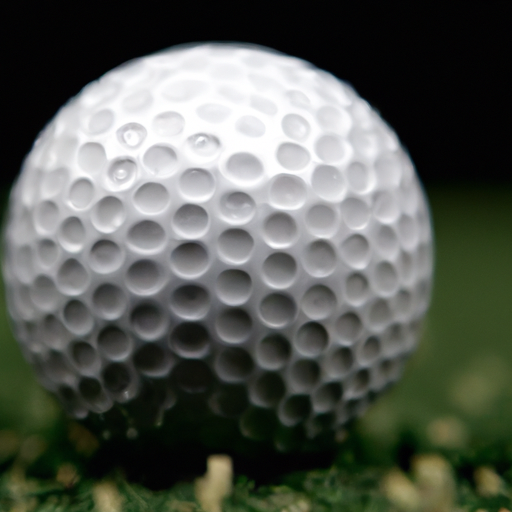We may earn money or products from the companies that may be mentioned in this post.
Have you ever wondered what golf balls are made of and whether they are hollow? This article will provide you with a brief overview of the materials used to create these small but mighty spheres. From the core to the cover, we will explore the composition of golf balls and shed light on the mystery of their construction. Get ready for some fascinating insights into the world of golf ball manufacturing! So, what are golf balls made of and are they hollow? Let’s find out together!
Materials Used in Golf Balls
Golf is a popular sport that requires precision, accuracy, and a keen understanding of the equipment used. One crucial piece of equipment that often gets overlooked is the golf ball. While it may seem like a simple sphere, a golf ball is a complex creation made using various materials. In this article, we will delve into the different components of a golf ball, including the cover, core, intermediate layer, and dimples. We will also explore the factors that affect golf ball composition, the evolution of golf ball materials, the manufacturing process, regulations and standards, as well as future developments in golf ball technology.

Cover
The cover of a golf ball plays a significant role in determining its performance characteristics. Golf ball covers are designed to enhance durability, provide a desired feel, and influence the spin and trajectory of the ball. There are several materials commonly used in golf ball covers, including Surlyn, Urethane, Balata, and Ionomer.
Surlyn
Surlyn is a durable and resilient material commonly used in golf ball covers. It provides excellent cut resistance and is ideal for golfers who prioritize durability over spin control. Surlyn covers offer a firmer feel and are often found in golf balls designed for distance and control.
Urethane
Urethane covers are favored by many professional golfers due to their exceptional control and feel. They provide a softer feel compared to Surlyn covers and offer enhanced spin rates, making them ideal for players who prioritize control and workability. Urethane covers are found in high-performance golf balls designed for skilled players.
Balata
Balata covers were commonly used in golf balls in the past but are now less prevalent. Balata is a natural rubber material that offers a soft feel and enhanced spin control. It provides excellent feedback and a high level of workability. However, Balata covers are more prone to cuts and scuffs, making them less durable compared to modern cover materials.
Ionomer
Ionomer covers are a popular choice among recreational golfers due to their durability and affordability. They offer a good balance between distance, feel, and spin control. Ionomer covers provide a crisp feel and are commonly found in golf balls designed for all skill levels.
Core
The core of a golf ball is the central component that influences its overall performance. The core is responsible for factors such as compression, energy transfer, and ball speed. Golf ball cores come in various designs and materials to cater to different player preferences and playing conditions.
Solid Rubber
Solid rubber cores were prevalent in early golf ball designs. They offer a firm feel and provide consistent ball speed. However, solid rubber cores may result in lower spin rates and reduced control compared to modern core designs.
Liquid Core
Liquid cores, also known as wound cores, were a significant advancement in golf ball technology. These cores consist of a rubber liquid center surrounded by a rubber thread windings layer. Liquid cores provide increased ball speed and spin rates, resulting in improved overall performance.
Dual Core
Dual core designs feature a combination of a firmer outer core and a softer inner core. This design allows for customized performance characteristics, such as increased ball speed off the tee and enhanced control around the green. Dual core golf balls are often preferred by players seeking a balance between distance and spin control.
Multiple Core
Multiple core designs take customization a step further by incorporating multiple layers of different materials within the core. These multi-core golf balls offer a range of performance benefits, such as increased distance, improved spin control, and enhanced feel. Advanced golfers often opt for multi-core golf balls to match their specific playing style and skill level.
Intermediate Layer
The intermediate layer, also known as the mantle, is located between the core and the cover of a golf ball. This layer contributes to the overall performance by affecting factors such as compression, ball speed, and spin rate. There are several materials commonly used in the construction of the intermediate layer.
Mantle
The mantle is typically made of a high-energy material designed to improve ball speed. It helps transfer energy from the clubface to the core, resulting in increased distance. Mantles can vary in thickness and composition, allowing golf ball manufacturers to fine-tune the performance characteristics of their products.
Elastomer
Elastomer materials, such as rubber or synthetic compounds, are sometimes used in the intermediate layer to enhance feel and control. Elastomer materials provide a softer and more responsive feel upon impact and can improve the overall playability of a golf ball.
Thermoplastic Resin
Thermoplastic resin materials are lightweight and provide durability and stability to golf ball construction. They contribute to maintaining consistent performance characteristics, even in varying weather conditions. Thermoplastic resins can help ensure that a golf ball performs consistently during a round of golf.

Dimples
The dimples on a golf ball may seem like a purely aesthetic feature, but they play a crucial role in the ball’s aerodynamics and flight performance. Dimples create turbulence in the air around the ball, reducing drag and allowing for greater lift. This results in longer shots and improved accuracy.
Purpose of Dimples
Dimples on a golf ball serve two primary purposes. Firstly, they reduce drag by creating a thin layer of air, known as the boundary layer, that clings to the surface of the ball as it moves through the air. This reduces the resistance the ball experiences and allows it to maintain its speed and trajectory. Secondly, dimples promote lift by producing an upward force that counters the effect of gravity, allowing the ball to stay airborne for longer distances.
Design of Dimples
The design of dimples can vary significantly, with different patterns, sizes, and depths. These variations influence the behavior of the ball in different flight conditions and affect factors such as spin, trajectory, and overall stability. Golf ball manufacturers conduct extensive research and testing to optimize dimple designs, ensuring the best performance for specific types of golf balls and player preferences.
Factors Affecting Golf Ball Composition
Several factors influence the composition of a golf ball and the materials used in its construction. These factors include the player’s skill level, playing style, weather conditions, and desired ball flight characteristics.
Player Skill Level
A player’s skill level is an important consideration when selecting the appropriate golf ball composition. Beginners and high-handicap players may benefit from golf balls that offer maximum forgiveness and distance, while more experienced players may prefer golf balls that provide greater control and spin.
Playing Style
Individual playing styles also play a role in determining the ideal golf ball composition. Players who prioritize distance and forgiveness may opt for golf balls with a harder cover and a low-spin core, while those who focus on control and workability may prefer golf balls with softer covers and higher-spin cores.
Weather Conditions
Weather conditions, such as temperature, humidity, and wind, can significantly affect the performance of a golf ball. Different compositions and materials can respond differently to varying weather conditions. Manufacturers consider these factors when designing golf balls to ensure optimal performance across a range of weather scenarios.
Desired Ball Flight
Every golfer has their preferred ball flight characteristics. Some players seek a high trajectory that allows for maximum carry distance, while others prefer a lower trajectory with controlled spin for greater distance rollout. The composition and design of a golf ball can influence its flight characteristics, allowing players to find the ideal ball to suit their preferences.
Evolution of Golf Ball Materials
The materials used in golf balls have evolved significantly throughout the history of the sport. From the early days of golf to the present, several key milestones mark the evolution of golf ball materials.
Featherie Golf Balls
Featherie golf balls were the first balls used in the game of golf. They were made by stuffing feathers into a leather pouch, which was then sewn together. Featherie balls were expensive, time-consuming to produce, and had a limited lifespan. Despite their shortcomings, they provided better performance compared to earlier wooden balls.
Gutta-Percha Golf Balls
Gutta-percha golf balls made their debut in the mid-19th century. These balls were made from the sap of the Gutta-percha tree and had a solid rubber-like feel. Gutta-percha balls were more affordable, durable, and had improved performance characteristics compared to Featherie balls. They remained the standard for several decades.
Rubber Golf Balls
The introduction of the rubber-core golf ball in the early 20th century revolutionized the game. These balls featured a liquid or solid rubber core, providing increased distance and a more consistent ball flight. Rubber golf balls quickly gained popularity and became the norm, leading to advancements in core design and materials.
Balata Golf Balls
Balata golf balls, made from the sap of the Balata tree, gained popularity in the mid-20th century. Balata balls offered a soft feel, enhanced spin control, and improved workability. However, Balata covers were prone to cuts and scuffs, leading to reduced durability. Despite this limitation, many professional golfers preferred Balata balls due to their performance advantages.
Synthetic Golf Balls
With advancements in materials technology, synthetic golf balls came into the picture. These balls incorporated synthetic materials, such as Surlyn and Urethane, in their covers, cores, and intermediate layers. Synthetic golf balls offered improved durability, consistency, and performance characteristics compared to their predecessors.
Manufacturing Process of Golf Balls
The manufacturing process of golf balls involves several steps to create a high-quality product that meets the desired performance standards. While each manufacturer may have slightly different processes, the general steps involved remain consistent.
Cover Production
The first step in golf ball manufacturing is the production of the cover material. The chosen cover material, such as Surlyn or Urethane, is melted and formed into a sheet or a liquid state. The sheet or liquid is then processed and cut into individual cover pieces, ready for the assembly phase.
Core Formation
The core material, whether it is solid rubber, liquid rubber, or a multi-layered design, is formed through various molding techniques. The core material is poured or injected into molds, taking shape as either a solid sphere or a multi-layered configuration.
Layer Assembly
Once the cover pieces and cores are ready, the layer assembly process begins. The cover pieces are positioned around the core, securely bonded using adhesives or heat. For multi-layered golf balls, additional layers, such as an intermediate layer or a mantle, may be added during this stage.
Dimple Formation
After the layers are assembled, the golf ball undergoes the dimple formation process. Dimples are created by applying pressure to the surface of the ball, deforming it to the desired dimple pattern. The dimple pattern can vary, with different designs optimized for specific performance characteristics.
Finishing
In the final stages of manufacturing, the golf balls go through a finishing process. This involves trimming excess material, smoothing the surface, and applying any additional coatings or finishes. The finished golf balls then undergo quality control inspections to ensure they meet the required standards before packaging and distribution.
Regulations and Standards
Golf ball regulations and standards are crucial in maintaining a level playing field and ensuring fair competition. The two main governing bodies in golf, the United States Golf Association (USGA) and the Royal and Ancient Golf Club of St Andrews (R&A), establish rules and specifications for golf balls.
USGA Rules
The USGA sets rules and regulations for golf equipment used in the United States, including golf balls. These rules cover various aspects, such as size, weight, initial velocity, distance, spin, and conformity. Golf balls must meet specific standards established by the USGA to be deemed legal for play in USGA-sanctioned tournaments.
R&A Rules
The R&A, which governs golf outside of the United States and Mexico, also establishes rules regarding golf ball specifications. Golf balls must meet the standards set by the R&A to comply with the rules of golf in countries adhering to R&A regulations.
Compression Ratings
Compression rating is another aspect governed by regulations and standards. Compression rating refers to the measurement of a golf ball’s hardness or softness, indicating how much the ball compresses upon impact. Golf balls are typically categorized into low, medium, or high compression ratings, catering to different player preferences and swing speeds.
Future Developments
As technology and materials research continue to advance, the future of golf ball design holds exciting possibilities. Manufacturers are constantly seeking ways to improve performance, feel, durability, and other key attributes of golf balls. Here are a few areas that could see significant developments in the future.
Advancements in Cover Materials
Research into new cover materials could lead to improved performance and feel characteristics. Manufacturers may experiment with new materials or combinations of existing ones to optimize golf ball performance for different players and playing conditions. Innovative cover materials could provide enhanced durability, increased spin control, or even new aerodynamic properties.
Improved Core Designs
Continued advancements in core design may lead to golf balls with even greater energy transfer, resulting in improved ball speed and distance. Manufacturers may develop new core materials or refine existing ones to achieve optimal performance across a wide range of player skill levels and swing speeds.
Technological Innovations in Dimple Patterns
Dimple design is an area of ongoing research, and future developments in this field could have a profound impact on golf ball performance. Golf ball manufacturers are likely to explore new dimple patterns, depths, and configurations to improve aerodynamics further, resulting in longer carries, more consistent flights, and increased overall performance.
In conclusion, the materials used in golf balls have a significant impact on their performance characteristics. The cover, core, intermediate layer, and dimples all contribute to factors such as durability, feel, spin control, and distance. The evolution of golf ball materials has seen significant advancements, allowing for better performance and playability. The manufacturing process involves several steps to create high-quality golf balls that meet the required standards. Regulations and standards set by the USGA and the R&A ensure fair competition and maintain the integrity of the game. Looking to the future, advancements in cover materials, core designs, and dimple patterns hold the promise of further enhancing golf ball technology, providing golfers with even better equipment to elevate their game on the course.
